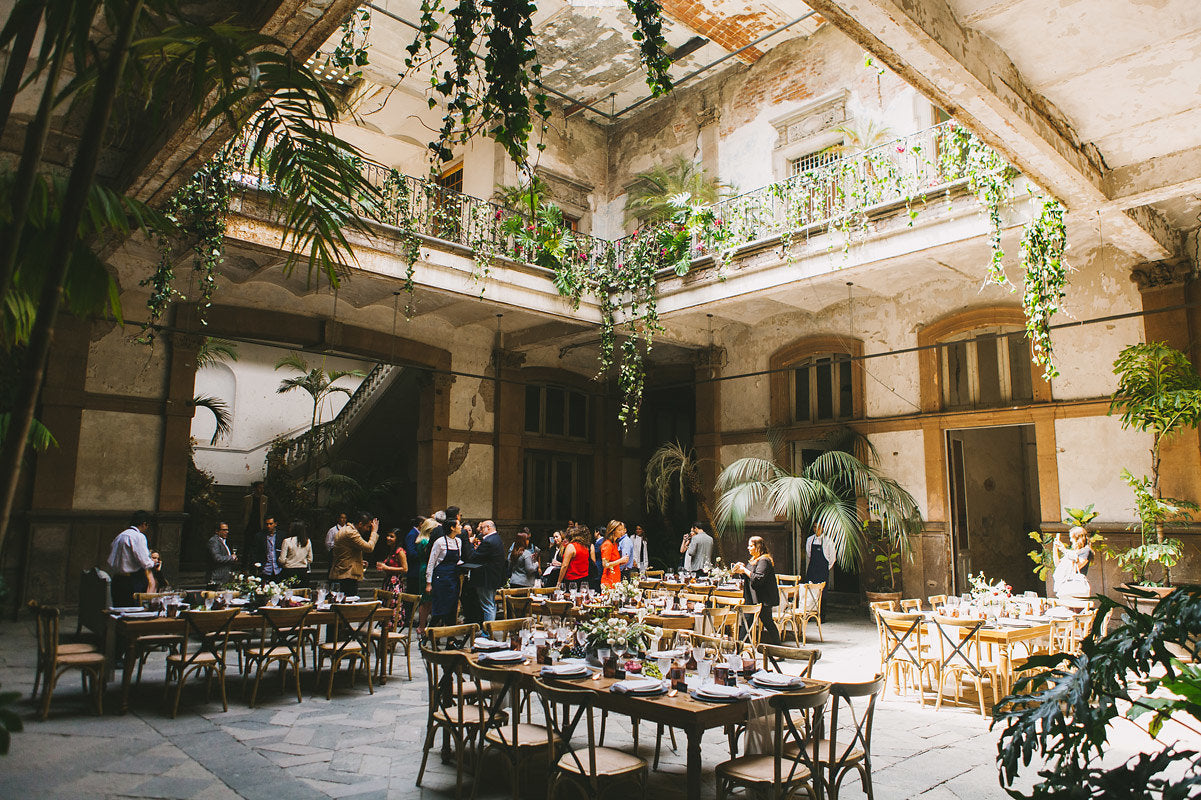One of the current global trends with greater growth among restaurants is the one involving pop-ups. Diners look for more than a nice meal, they wish to enter a space that surrounds them and leads them to have an experience beyond the food.
Theme and multisensory restaurants are on the radar, but the ones which have become most popular are those that settle in a space for a limited time, where they create a full experience and later move to another destination or disappear completely.
The challenge for these spaces with an expiration date is not only about the dining offer, but also in achieving an environment attractive enough to get the diners’ attention and which is functional at the same time, to be able to offer a menu worthy of a fully established restaurant. Some examples which have taken the spotlight have been Dinner in the Sky, consisting of a crane that elevates a table and chairs so the meal is enjoyed with a spectacular view (in Mexico, it is held over the pyramids at Teotihuacán); or Noma restaurant by famous chef René Redzepi, which he moved from Denmark to a beach in Tulum for six weeks only.
As many people started talking about this kind of experience, more people began looking for similar experiences to satisfy their need for originality and which offered something unexpected within a different context. Today, we find more and more pop-up restaurants with a life spanning from one day to several weeks, which surprise for their elaborate designs while they last; they are not less impressive for being nomadic or ephemeral.
There is a hotel in New York that stands out for surprising guests every chance it gets and summer is not different. This time, they turned the hotel patio into a botanical garden with small private greenhouses where a table of up to eight people is set, Arlo Blooms Pop-up. At the center of a colorful flowered forest, diners were able to enjoy a seasonal menu, which meant to raise awareness on environmentally friendly choices and sustainable tourism. Even though all the flowers were shining splendidly, one of their greatest achievements on design is that some of them were artificial and they integrated real plants into greenhouses, which helped purify the air and eliminate toxins from the environment.
The famous Italian restaurant Eataly Flatiron created a seasonal space on the 14th floor of the building, which is the restaurant’s rooftop, and turned into an exuberant garden to take country days into New York City: Serra by Birreria. Serra stands for greenhouse in Italian, reason why the place was filled with hanging plants creating a dreamlike ceiling, also, flowers in every color covered the walls. The furniture, mainly made of wood, served as camouflage for the surroundings by combining rustic style tables with chairs as colorful as the flowers with a romantic style, as if taken from a scene from Alice in Wonderland. Dishes are seasonal and natural wines stand out along with a spritzer selection. The complexity of preserving this garden was solved through the hydroponic technique, which does not employ soil; instead, everything is grown in water. Thanks to this, they also created an orchard where they grow ingredients like rosemary and mint for cocktails.

The Banquet of Hoshena nomadic dining experience takes the design concept to another level, which is not limited by space and furniture, since they challenge themselves when dealing with something that constantly changes location, but they also add complexity to technology by combining the meal with a visual feast through mappings. For two hours, the five-course dinner is accompanied by a show that pairs each dish with a story of magic and fantasy through music, sounds, and projections, which interact with the food, furniture, and utensils on the table. The experience will be available from May 5 through August 7 at the Westfield Shopping Mall in London; afterwards, it will travel to the United States, Dubai, Germany, Abu Dhabi, and Stockholm.
Based in Mexico City, the creative people behind the Hidden Kitchen concept hold clandestine dinners every two months, where 40 strangers have the opportunity to share a table in an unexpected location. Empty houses, art galleries, parking lots, and buildings under construction have been spaces where they set their itinerant tables. These spaces are transformed through design and lighting to set a huge table where they serve their culinary creations. The decoration with candles, plant arrangements and flowers hanging from the ceiling, light sets on the walls, lighting series and colorful chairs have been some elements they use as allies to turn any space into a restaurant.



